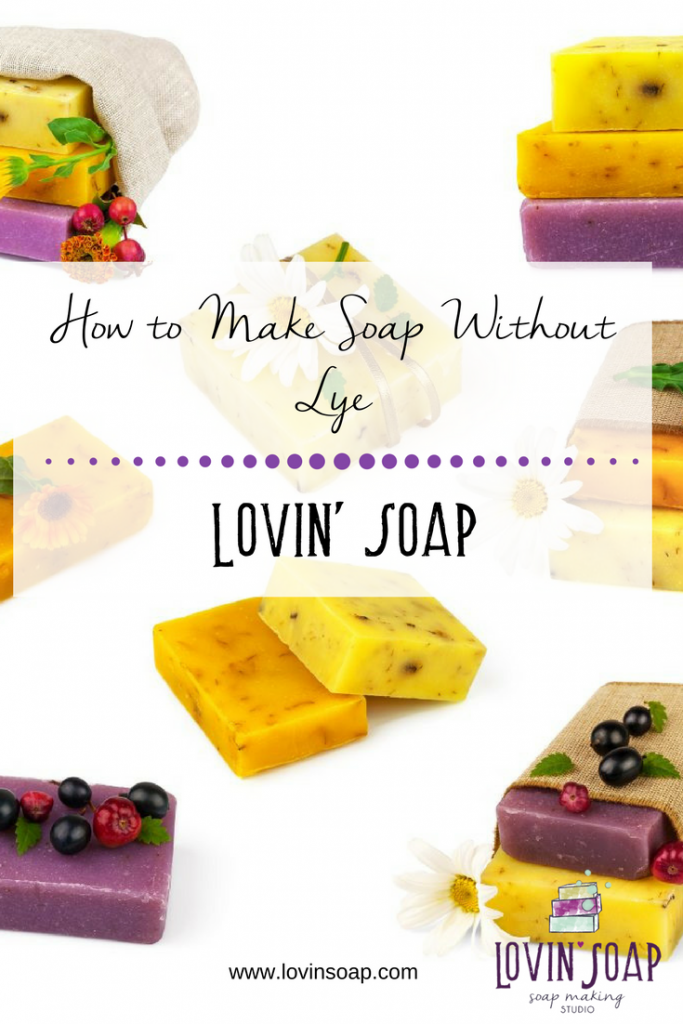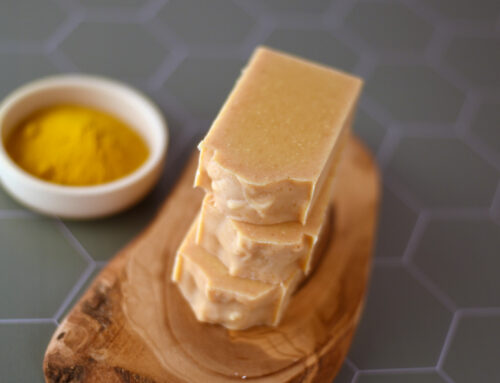Okay…I have to be honest…
I planned this blog post because one of the top search results that get’s people to my blog is “how to make soap without lye.” I have no idea why. I haven’t posted an article about making soap without lye, but keywords and Google searches can be complex and result in unexpected results. So I wanted to address this as people are searching for this.
When it come to DIY and soapmaking there are two popular types of soap that you can make.
It is important to know that lye is called sodium hydroxide.
Cold Process Soap – The cold process soap method of making soap uses lye as part of the process. The resulting soap is comprised of salts of the fatty acids, natural glycerin and un-saponified oils (superfat). No lye is left in the final product after the curing period.
![]()

When you make cold process soap you do have to work with lye.
Soap has been traditionally made by this process (or similar processes, including hot process). Even soap you buy at the grocery store was made with lye. Read the label. Does it say saponified oils of …? Or does it say sodium tallowate?
Saponified oils are oils that have been turned to soap by lye.
Sodium tallowate is tallow (rendered beef fat) that has been turned to soap by lye. Sodium tallowate is the salts of the tallow fatty acids.
Melt and Pour Soap (MP Soap) – This method of making soap uses a pre-made soap base. You melt down the soap blocks, add color and fragrance and mold the soap. This process of making this soap usually included lye. The lye is used as a processing agent and is not in the final product. The soap is mixed with chemicals that make it re-meltable (such as Propylene Glycol). I think this is the type of soap instructions that people are looking for when they search how to make soap without lye. When working with MP soap you are using a soap base that has already been formed, so you don’t have to work with lye (sodium hydroxide).

Melt and pour is great for kids to craft with or for people who don’t want to work with lye.
My favorite soap to make is cold process soap! You’ll find all kinds of blog posts and recipes on this blog.
I have two MP soap tutorials.
So if you want to make soap without having to handle lye, make melt and pour soap. I’m not the best resource for MP soap tutorials. Check out Soapqueen.com for that.
If you want to make a more natural soap from scratch, consider cold process soap. Check out my How to Make Cold Process Soap eBook and Recipe Book.
Happy Lye-Free Soaping!
-Amanda Gail








Just recently, someone was chastising other soapers for telling her she couldn’t make soap without lye. She claimed she could and posted a link to your information here. Promoting the idea that melting pre-made soap, adding fragrance and color, etc., is the same as making soap from scratch is disingenuous. That’s like saying buying pre-made food, heating it up, adding some extra ingredients for flavor or eye appeal is the same as actually having created the dish from scratch. Your headings, etc., should not read how to make soap without lye. When using melt and pour, people are simply embellishing soap they already purchased.
I can guess why people search for “making soap with no lye”. Probably the majority of people have preconceptions that are fed to us today about “natural products” and the idea that lye is a bad chemical. The reality is, all things are made up of chemicals, even “natural” things. Poison ivy is natural but causes rash; lots of seeds are poisonous (apple, tomato) but we don’t even think about it. So everyone is on this kick that something labeled “natural” must be better for their health but, in reality, this is a vague idea that they probably couldn’t define. So, as soapmakers, when people ask what our soap is made of, we eventually get to the “lye” conversation. The “natural” industry is both our friend and foe.
Ugh, that title. We have soapers in this area who have this in big letters on their signage, claiming to make it from scratch. I find it untruthful and deceptive. When questioned, it is usually a MPer, with very little experience selling soap. Just because YOU don’t handle the lye or caustic, does not mean that it wasn’t made with lye. Their labels are usually non-existent or full of FDA errors. For those soapers that continue with the myth, I simply explain that if it does not include lye, then they are not selling soap, they are selling detergent. It is hard enough educating our customers, to have to educate soapers who don’t care to be accurate is very frustrating. Thanks for addressing the issue!
I love what you does my dear, I hope to learn more from you. Go ahead
I love the information in this post. Lye can often be daunting to use as a new soaper and melt & pour is a terrific option for anyone! Thanks for sharing this Amanda. =)
We get this question all the time, too – and just recently someone emailed us hoping they could make liquid soap without lye, even though they knew bar soap needed it. The process & safety considerations can be intimidating to beginners!